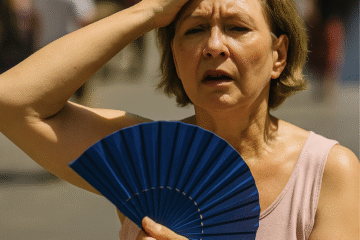Chasing Temperate Bliss: Evaluating the Costs and Benefits of Vacation Climates on Well-being
When planning a vacation, one crucial factor that often gets overlooked is the effect of temperature on our mood and overall well-being. In a world where July can mean either a mid-summer heatwave or a mid-winter chill depending on your location, understanding the relationship between temperature, happiness, and the value derived from a vacation is essential.
Navigating the Weather for Vacation Bliss:
1. The Complexity of Sunshine: Vitamin D and Aggression
Sunshine is often associated with happiness due to its role in stimulating Vitamin D production, which has been found to enhance mood (Gloth et al., 1999). However, there’s also research indicating that excessively high temperatures can provoke aggression and discomfort (Anderson, 1989). Striking a balance is essential, especially for those who already reside in warmer climates.
2. Weighing Costs Against Well-being
For individuals hailing from hot regions, vacationing in similarly hot destinations might not provide the mental refreshment they seek. When investing in a vacation, it’s worth considering destinations with a different climate or offering diverse cultural experiences to maximize the benefits for your well-being.
3. Embracing a Complementary Climate
A change of climate can be rejuvenating. If you’re used to a hot climate, a vacation to a cooler place can provide a refreshing contrast and contribute positively to your well-being (Nikolopoulou et al., 2001).
4. Prioritizing Cultural Experiences
Sometimes, a destination’s cultural wealth may outweigh the climatic considerations. Immersing oneself in new cultures and experiences can significantly enhance well-being (Gilbert & Abdullah, 2002), making climate a secondary factor.
5. Planning for Maximum Enjoyment
Regardless of the climate of your chosen destination, planning activities in line with the weather conditions and being mindful of your emotional reactions to temperature changes can help optimize your experience.
6. The Hemisphere Factor: Transitioning Smoothly
Traveling between hemispheres with contrasting seasons requires adjustments. Gradual acclimatization, appropriate clothing, hydration, a healthy diet, sleep aids, and a balanced post-vacation routine can aid in smooth transitions both to the vacation spot and back home.
Conclusion:
The influence of temperature on well-being during vacations is significant. Those hailing from hot climates might gain more from visiting a temperate or culturally rich location. Understanding the relationship between temperature and mood, and planning accordingly, can lead to a more rewarding vacation.
View today’s Smart Deals at Cruise Critic

References:
- Gloth, F. M., Alam, W., & Hollis, B. (1999). Vitamin D vs broad spectrum phototherapy in the treatment of seasonal affective disorder. The Journal of Nutrition, Health & Aging, 3(1), 5-7.
- Anderson, C. A. (1989). Temperature and aggression: ubiquitous effects of heat on the occurrence of human violence. Psychological bulletin, 106(1), 74.
- Nikolopoulou, M., Baker, N., & Steemers, K. (2001). Thermal comfort in outdoor urban spaces: understanding the human parameter. Solar energy, 70(3), 227-235.
- Gilbert, D., & Abdullah, J. (2002). A study of the impact of the expectation of a holiday on an individual’s sense of well-being. Journal of Vacation Marketing, 8(4).




2 Comments
November Getaways: Top Destinations to Explore Before Winter Sets In - Trave-Psych · 5 November 2023 at 21:43
[…] Related article: Chasing Temperate Bliss: Evaluating the Costs and Benefits of Vacation Climates on Well-being […]
Unforgettable December Journeys: Exploring the Best End-of-Year Destinations - Trave-Psych · 1 December 2023 at 22:09
[…] Related article: Chasing Temperate Bliss: Evaluating the Costs and Benefits of Vacation Climates on Well-being […]